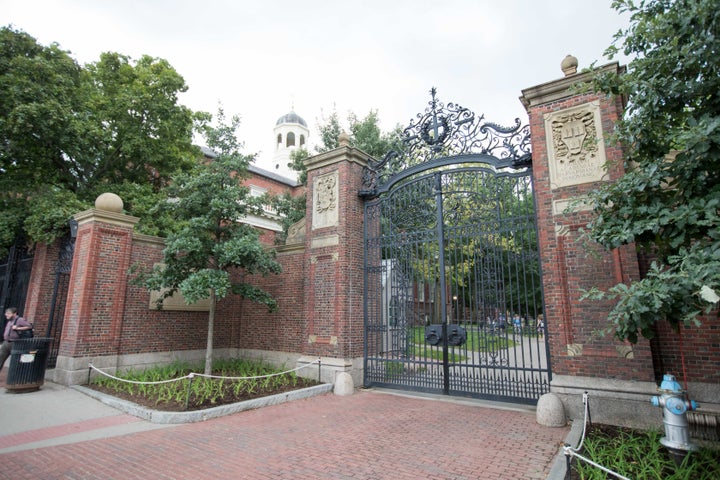
When the U.S. District Court in Boston convenes on Monday to consider the case of Students for Fair Admissions v. Harvard, conservative activists may be on the verge of accomplishing what more than four decades of relentless effort has failed to do: the elimination of affirmative action for blacks and Latinos.
Having tried four separate times (DeFunis, Bakke, Grutter, and Fisher) to convince the Supreme Court to abolish the practice, those activists have now adopted a new strategy, arguing that Asian-Americans are discriminated against in admission to elite colleges because of affirmative action.
This charge of discrimination draws much of its moral force from its claim that Asians are the “new Jews”; that just as Jews were subject to invidious discrimination in the 1920s and beyond, so, too, are Asians today. But this analogy, based in no small part on my book, The Chosen: The Hidden History of Admission and Exclusion at Harvard, Yale, and Princeton, is both flawed and deeply cynical.
“The analogy between Jews and Asians that frames the current case against Harvard obscures more than it illuminates.”
The story of discrimination against Jews in college admissions begins in the early 1920s, when Abbott Lawrence Lowell, the president of Harvard and former vice president of the Immigration Restriction League, decided that the school needed to apply the same xenophobic logic to the “Jewish question” that led to the racially and ethnically discriminatory Immigration Act of 1924. That law limited the number of immigrants from eastern and southern Europe while banning immigrants from Japan, China and other Asian countries.
Lowell and his political allies believed that too many Jews ― and in the case of immigrants, too many people of non-Anglo-Saxon backgrounds ― threatened the very character of Harvard and the nation as a whole.
When growing numbers of Jews passed the exam that was then the only requirement for admission, Harvard imposed various measures designed to stem their enrollment ― among them, the emphasis on “character,” “leadership,” athletic prowess and alumni parentage.
And when the new policies failed to sufficiently limit the number of Jews, Harvard and other leading colleges resorted in the 1920s to the blunt-edged instrument of a Jewish quota: 15 percent at Harvard, 10 percent at Yale, and 3 percent at Princeton.
Discriminatory policies against Jews remained in place in some form until the 1960s.
If the context in which Jewish quotas in college admissions were devised was one of restriction and exclusion, the context in which affirmative action was born was one of diversity and inclusion.
Adopted in the 1960s in response to the civil rights movement, affirmative action aimed to rectify a historic wrong: a long history of oppression and discrimination against racial minorities, especially African-Americans. Now nearly forgotten is the history of de facto segregation at the nation’s leading universities; as late as 1960, the total number of black students entering the Ivy League’s three most selective institutions was nine at Harvard, five at Yale, and just one at Princeton.
In an atmosphere of civil rights protest and urban riots, such exclusion was simply no longer tenable, and race-based affirmative action was created as a modest but meaningful reform.

In such an atmosphere, the exclusionary immigration policy in place since the passage of the Immigration Restriction Act of 1924 also found itself under challenge. On Oct. 3, 1965 ― barely two months after the passage of the Voting Rights Act of 1965 and just over a year after the signing of the Civil Rights Act of 1964 ― President Lyndon Johnson signed into law the Immigration and Nationality Act of 1965, which removed racial and national barriers and made America much more open to immigrants from Asia, Africa, and Latin America.
A dramatic demographic transformation of the U.S. population took place over the ensuing decades. The new immigration law has had a particularly transformative effect on the Asian-American population; totaling just under one million in 1960, Asian-Americans now constitute a socially and ethnically heterogeneous population of approximately 20 million.
By the 1980s, when charges of discrimination against Asian-Americans in college admissions first surfaced, the context of elite college admission had been dramatically altered. Unlike in the 1920s, when WASPs and Jews were the principal groups vying for admission to Harvard and the overall acceptance rate was over 50 percent, a multitude of groups ― whites, Asians, blacks, Latinos, Native Americans, plus applicants from a wide range of countries in an increasingly globalized world ― were now fiercely competing for a slice of the admissions pie, and the proportion of applicants admitted had dropped under 15 percent.
By 2018, the admission rate at Harvard had plummeted to below 5 percent, and the guiding ethos was one of inclusion, with a conscious effort to enroll not only blacks and Latinos, but also the socioeconomically disadvantaged of all races. Unlike in the 1920s, when the percentage of Jews at Harvard dropped sharply after the imposition of quotas from 28 percent in 1925 to 15 percent in 1927, the proportion of Asian-Americans has gradually (if unevenly) increased, reaching 22 percent in the class that entered Harvard in 2017.
Yet Harvard’s use of a “personal” category of ratings and its notoriously opaque admissions process have led to suspicions of discrimination. And there are, without question, features of Harvard’s policies ― most notably the preference for alumni children and athletes ― that have the consequence of limiting the number of Asians-Americans. There can, moreover, be no denying that, as the plaintiffs in next week’s case argue, an admissions policy based strictly on academic criteria would ― as was the case with Jews in the 1920s and beyond ― result in an increase in the number of Asian Americans.
“The Asian-American question is an entirely different matter than whether universities should end affirmative action for historically underrepresented minorities.”
But the policy of Harvard and other leading institutions is self-consciously not one of admitting students solely on the basis of putatively objective academic measures such as SAT scores and grade point averages. Harvard and its peer institutions understand themselves to be in the business of selecting and shaping the next generation of national and global leaders ― a mission that they judge would be poorly served by a definition of “merit” that is narrowly academic.
These policies, as well as such dubious practices as legacy preference that further privilege the already privileged, are properly the object of vigorous public debate.
That said, the analogy between Jews and Asians that frames the current case against Harvard obscures more than it illuminates. Unlike quotas, which substantially reduced Jewish enrollments, affirmative action has proved compatible with both an increase in Asian-American enrollments and expanded opportunities for African-Americans and Latinos.
But perhaps the most revealing of the many differences between the two cases is the response of Jews and Asian-Americans to the charge that Harvard was discriminating. In the 1920s, the Jewish community was virtually unanimous in its denunciation of Harvard’s policy whereas today, the Asian-American community is divided on the issue. Recognizing that the lawsuit is at bottom an assault on affirmative action, 35 Asian-American organizations signed a brief defending Harvard’s policies.
In the end, the Asian-American question is an entirely different matter than whether Harvard and other highly selective universities should end affirmative action for historically underrepresented minorities. We know from the experience of my own institution, the University of California at Berkeley, what the consequences will be if affirmative action is ended: After the passage by California voters of Proposition 209 in 1996, black enrollment declined from nearly 10 percent in the mid-1990s to under 3 percent in recent years.
In a nation still wracked by glaring racial inequalities, a ruling permitting the controversy over Asian-American admissions to serve as a wedge enabling the foes of affirmative action to realize their long-cherished goal of abolishing it would be a serious mistake.
Jerome Karabel, professor of Sociology at the University of California at Berkeley, is the author of The Chosen: The Hidden History of Admission and Exclusion at Harvard, Yale, and Princeton. He is at work on a book tentatively titled Outlier Nation: The Roots of American Distinctiveness and How It Shapes Us Today, which he began as a Fellow at the Woodrow Wilson International Center for Scholars in Washington.
CORRECTION: An earlier version of this article incorrectly stated the number of Asian-American organizations that had signed an amicus brief supporting Harvard in the case.
